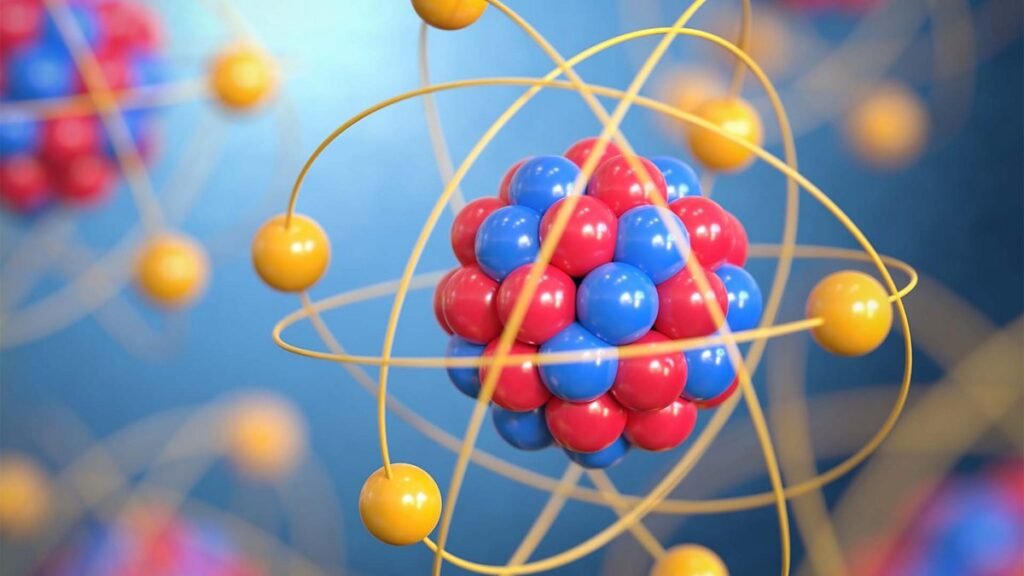Atoms are the basic building blocks of matter, and understanding their electrical properties is crucial to grasping chemistry and physics. A common question asked by students and science enthusiasts alike is: “What is the overall charge on an atom?” This article offers a simple yet thorough explanation.
Profile Biographie Table
| Attribute | Details |
| Concept | Overall charge on an atom |
| Scientific Field | Chemistry, Physics |
| Discovered by | Early atomic theorists (Dalton, Rutherford) |
| First Introduced | 1803 (Atomic Theory) |
| Main Components | Protons, neutrons, electrons |
| Importance | Foundation of atomic and molecular science |
| Charge Value (Neutral) | 0 (when protons = electrons) |
| Applies to | All neutral atoms in their ground state |
The Structure of an Atom
Atoms consist of a dense nucleus containing protons and neutrons, surrounded by a cloud of electrons. Protons are positively charged, electrons are negatively charged, and neutrons carry no charge at all.
Charge of Subatomic Particles
Each subatomic particle carries a specific electrical charge:
- Proton (p⁺): +1 charge
- Electron (e⁻): –1 charge
- Neutron (n⁰): 0 charge
These charges are fundamental to understanding an atom’s total electrical charge.
The Concept of Atomic Neutrality
In a neutral atom, the number of protons equals the number of electrons. Since the positive and negative charges cancel each other out, the overall charge on a neutral atom is zero.
For example:
A carbon atom has 6 protons and 6 electrons → +6 + (–6) = 0 → Neutral
When Do Atoms Have a Charge?
Atoms become ions when they gain or lose electrons:
- Cation: An atom loses electrons → positive charge
- Anion: An atom gains electrons → negative charge
These are not neutral atoms, so their overall charge is non-zero.
Examples of Neutral Atoms
| Element | Protons | Electrons | Overall Charge |
| Hydrogen | 1 | 1 | 0 |
| Helium | 2 | 2 | 0 |
| Oxygen | 8 | 8 | 0 |
| Sodium | 11 | 11 | 0 |
These examples show how atoms stay balanced unless altered.
Atomic Ions and Charge Imbalance
As soon as the number of protons and electrons becomes unequal, the atom no longer has an overall charge of zero. Instead, it holds a net charge.
- Na⁺ (Sodium ion): 11 protons, 10 electrons → Charge = +1
- Cl⁻ (Chloride ion): 17 protons, 18 electrons → Charge = –1
Importance of Atomic Charge in Chemistry
Atomic charge is central to understanding:
- Chemical bonding
- Ionic compounds
- Molecular interactions
- Electricity and conductivity
A neutral atom behaves differently than a charged ion during reactions.
How to Determine the Overall Charge on an Atom
Use this simple method:
Overall Charge = (Number of Protons) – (Number of Electrons)
If the result is 0 → Neutral atom
If positive → Cation
If negative → Anion
Visualizing Neutral vs Charged Atoms
To better understand, imagine a balance scale:
- One side holds positive marbles (protons)
- The other holds negative marbles (electrons)
If both sides are equal, the scale is balanced (neutral). If not, one side tips, creating a charge.
Common Misconceptions
- “Atoms always have a charge.”
❌ False – only ions are charged. - “Neutrons affect charge.”
❌ Incorrect – neutrons are neutral and don’t influence electrical charge. - “All atoms of an element are neutral.”
⚠️ Sometimes atoms of an element may lose/gain electrons and become ions.
Read More: RandomGiantNet – A Deep Dive into the Mysterious World of Digital Giants
Summary: What Is the Overall Charge on an Atom?
In summary, a neutral atom has no overall charge because the positive charge from protons is perfectly balanced by the negative charge from electrons. If this balance is disrupted, the atom becomes an ion with either a positive or negative net charge.
